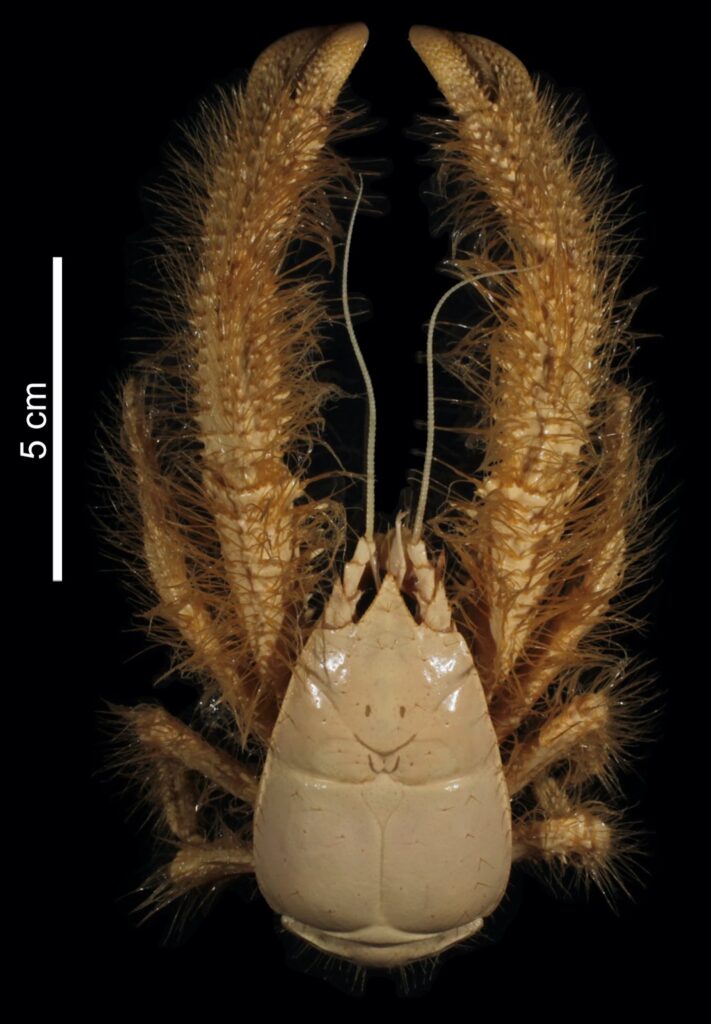by Nicole Gadda
Have you ever wondered how life on Earth began? If so, you’re not alone. Many scientists are studying exactly how life started. One theory suggests the first signs of life were single-celled microorganisms living in extreme environments known as hydrothermal vents. Sorry, hydro-what-now?
Hydrothermal vents were first discovered in 1977 by scientists who were exploring an underwater mountain ridge near the Galápagos Islands. The researchers were routinely recording temperature measurements when they noticed a large spike in their data. Shockingly, the ocean temperature drastically changed from near freezing to over 700 °F! When the scientists investigated further, they were amazed to discover deep-sea hydrothermal vents.
Hydrothermal vents are similar to geysers, or hot springs, on the ocean floor. But how do hot springs exist underwater where the water temperature is cold? It has to do with Earth’s crust, which is the outermost layer of the planet. Earth’s crust is broken into a series of solid rocks and minerals that form what are known as tectonic plates. These plates slide over the Earth’s mantle, the middle layer between Earth’s crust and the core. The movement of these plates over time is responsible for geological features like mountains, volcanoes, and deep sea trenches. Specifically, when plates move away from each other in a process called seafloor spreading, deep cracks form in the crust. When these spreading centers occur underwater, cold seawater seeps into the deep cracks and fissures, where it meets hot magma and becomes superheated. As the superheated seawater moves through the crust, it picks up minerals along the way. Eventually, the extremely hot temperature of the seawater builds up pressure, causing it to jet up through the fissure back to the ocean floor and spouts plumes of hot, cloudy, mineral-filled water through a hydrothermal vent. As the vent minerals cool and solidify as they come in contact with the cold seawater, they form a solid structure on the ocean floor surrounding the vent called a vent chimney.
There are two types of hydrothermal vents: black smokers and white smokers. Black smokers spout out the hottest and darkest plumes, whereas white smokers are cooler in temperature and lighter in color. Black smokers are high in iron and sulfur, which gives the plume and vent chimney a dark, black color. In comparison, white smokers are high in barium, calcium, and silicon, which results in a lighter colored plume and chimney.
Because hot magma heats the seawater in hydrothermal vents, the plumes can reach temperatures over 700 °F! Despite the hot temperature, high mineral content, and lack of sunlight, a diverse community of animals and microorganisms has figured out a way to make hydrothermal vents their home. How is it possible to not only survive, but thrive in such an extreme environment? While the plume can reach 700 ºF, a temperature gradient forms in the surrounding seawater. The water immediately surrounding the plume is very hot, while the water farther away from the plume cools off with distance.

Most animals can’t live in anything over 100 °F, but certain types of microbes, called extremophiles (“lovers of extreme conditions”), can exist in extreme temperatures. These microbes, which consist of bacteria and archaea, are able to withstand high temperatures near the plume of the hydrothermal vent and are the foundation of the vent ecosystem. Microbes “eat” the minerals and chemicals that spew from the vents to form energy in a process known as chemosynthesis. Similarly to how our bodies convert food into energy, chemosynthesis is the process of converting chemicals into energy. When microbes convert minerals into energy, they release new compounds that can be “eaten” by other organisms. Larger animals in the vent ecosystem, like the Yeti crab, can also feed on the microbes themselves. Many species in the vent ecosystem, like the Yeti crab and the scaly-foot snail, have never been found anywhere else on Earth except for around hydrothermal vents.
Not only can life survive in the hostile environment of hydrothermal vents, but some scientists believe that life on Earth may have originated there. The first living beings began as single-celled microorganisms, like bacteria and archaea. While there are many different theories as to the exact origin, some scientists believe the single-celled microorganisms that eventually led to the evolution of all life on Earth may have originated at these hydrothermal vents. A group of researchers discovered some of the earliest evidence for microbial life on Earth in rocks that formed in hydrothermal vent environments approximately 4 billion years ago. Similarly, the hostile environment of hydrothermal vents may have provided ideal conditions for life to begin. The high pH, or low acidity, and rich mineral composition results in chemical reactions between hydrogen and carbon dioxide to form organic compounds. Organic compounds are the building blocks of cells and structures of all life as we know it, making the hydrothermal vent a likely place for life to begin.
Regardless of whether life originated there or not, we know with certainty that hydrothermal vents are fascinating ecosystems with a diverse collection of rare and unique animals that can survive in the toughest of Earth’s environments!
